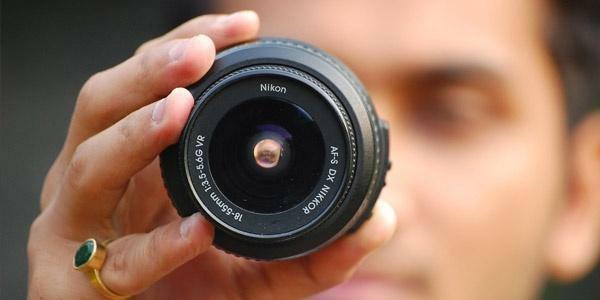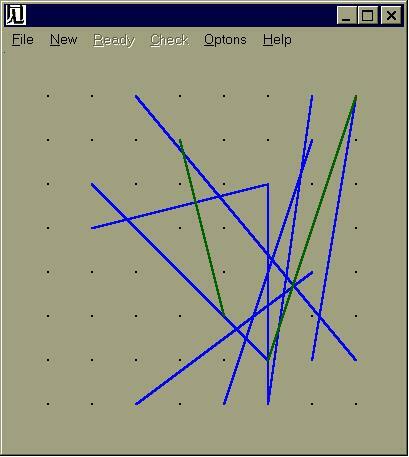I think none of you will argue with the fact that the faster and more detailed a person remembers new information, the easier it is for him to live.
To our common joy, any kind of memory, including photographic, can be trained.
Today we will talk about how develops the photographic memory of .
Believe, the ability to remember what you saw as if you could capture it through the camera lens, you will be very useful.
What is photographic memory and how to develop it?
Photographic memory is a person's ability to memorize the visual image in the smallest details and reproduce it after a while with the help of a picture or a story.
Its scientific name is eidetic( from the Greek word, which translates into Russian as an "image").
People who have a unique photographic memory, are infrequent.
Among the most famous photographers:
- American President Ronald Reagan, who had only a few seconds to look at the page to remember it;
- writer, journalist and artist Shereshevsky Solomon is one of the first objects of research of academicians dealing with problems of photographic memory;
- is an Italian librarian who lived in the 17th century, knew by heart over 40,000 books he had read.
Less impressive results were shown by my classmate Anya, who struck us all once on a couple dedicated to the types of memory, remembering the complicated composition and the overloaded details after 30-second viewing.
The basic methods of memory development
However, half an hour later, when the teacher asked us to reproduce what she saw again, the results of Ani were not too different from ours.
And yet the teacher assured that the girl has a great photographic memory, and if she will develop it, she will be able to keep the visual images in my head much longer.
Who first researched photographic memory and ways to develop it?
Serious studies of photographic memory began only in the early twentieth century.
The first scientist who described eidetism as a phenomenon was the Serb V. Urbancic.
His works appeared in the distant 1907.
German psychologist E. Jenschom managed to go even further and carry out a series of studies that proved its existence and managed to demonstrate its difference from visual and other types of memory.
But the farthest in the study of eideticism was the Soviet academician A.R.Luria. His work "A Little Book on Great Memory" is devoted to the study of unique abilities to memorize anything, S.V.Shereshevsky.
The unsuccessful musician was forced to look for work in the newspaper.
It was there that first noticed his phenomenal memory and advised to consult a therapist.
Shereshovskiy fell into the hands of Academician Luria, who opened his abilities to the whole world.
Reporter Solomon Veniaminovich retrained in a circus, amazing spectators with his ability to memorize phrases, figures, images, etc. with lightning speed.
What is the difference between visual and photographic memory and what needs to be developed?
For a long time, photographic and visual memory was not delimited.
Until now, many confuse these two concepts.
And yet the visual photographic ability to remember is different and they should not be confused.
If to explain in simple language, photographic memory is named so not casually, because the process of remembering resembles photography as much as possible: the picture is postponed to the subcortex of the brain as it really is, with all the details.
Spotting the same memory allows you to memorize a general picture, not focusing on details and often - even slightly distorting them.
The main differences between photographic memory and visual are that:
- Having ceased to look at a picture, a person sees it in such detail that it is still in front of him.
- Not individual details are memorized, but the whole object is recorded, that is, the process of photographing takes place.
- An image created with the help of eideticism can not be reproduced after it fades out on the internal screen.
How to develop photographic memory, without resorting to special training?

Those who are fortunate enough to have good memory abilities need to develop it in order to use their skills for their own benefit.
But those who do not have the ability to quickly remember what they see and reproduce it, simply have to work on themselves to have a chance of success.
Of course, not everyone has the opportunity to devote time to special training, and a lazy by nature creation, called a person, is not so easy to force yourself to do something on purpose.
But there is a way out: you can develop your photographic memory anywhere: in public transport, in the office, on the streets, etc.
For example, sitting in a subway car, try to "photograph" a person standing or sitting opposite.
After stopping to look at it, reproduce all the details of his costume mentally.
Features of memory development in children
Or, waiting for the bus at a stop, try to remember the advertisement, and then - check whether you remember everything correctly or not.
At first it will not work very well, but, working hard, you will be surprised at the results and how easily you managed to develop your photographic memory without spending too much time training.
How to develop photographic memory with the help of a special training?
Take an example with Leonardo da Vinci, whose favorite occupation was looking at the wall, sprayed with paint.
There the great artist drew inspiration for creating new images and at the same time coached eidism and associative thinking.
You do not need to walk around the city in search of an artistically painted wall, and you do not have to spoil the beautiful interior of the house by allocating one of the walls for training, because there are many methods on the Internet that help to develop photographic memory in a short time.
For example, in the training of eidetism you can help here is such a picture:

Look at it and remember the location of the lines, and then reproduce on the sheet of paper exactly the same pattern.
To make the training process faster, look for associations.
3 exercises with which you can develop a photographic memory
If you decide to improve your performance seriously, then for sure you will need some simple exercises:
-
Find several images of formulas( mathematical, chemical, physical - any).
Look carefully at the formula for 10-20 seconds and mentally imagine how the formula is written on your internal "screen".
Then close your eyes and reproduce what you remember.
Start with simple formulas, gradually complicating your task.
-
Look at some paragraph of the text, but without reading it as usual, as if photographing, trying to cover the entire paragraph at once.
Close the text and write on paper what you remember.
Perform the exercise as many times as necessary to reproduce the paragraph of the text in its entirety.
-
Try to "photograph" as many numbers as possible, written in a column or in a row.
Gradually increase the number of digits.
Another exercise for the development of photographic memory
is described in the video:
I do not think that you will have problems with the how to develop the photographic memory of .
The main thing is to work hard to achieve really good results.
